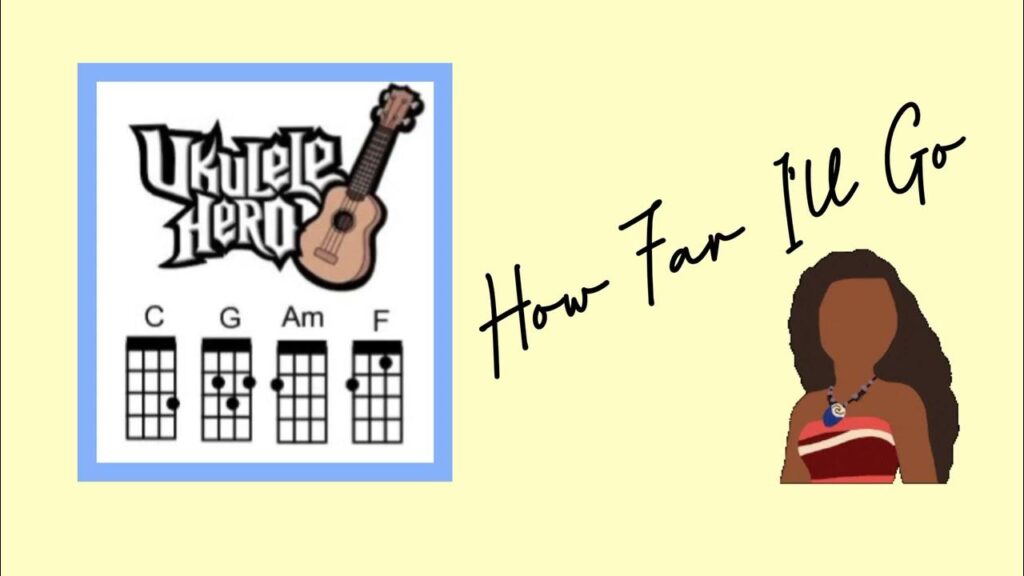How Far I’ll Go: Chords, Techniques, and Insights
Introduction
“How Far I’ll Go,” performed by Alessia Cara for Disney’s animated film Moana, is a popular song that resonates with many due to its themes of self-discovery and adventure. The song’s melody and lyrics inspire listeners to explore their potential and embrace their journeys. This article will provide a comprehensive guide on how to play the song on guitar, including the chords, strumming patterns, and techniques involved. Additionally, we will explore the song’s background, significance, and a FAQ section to address common queries related to the song and its performance.
Background of the Song
“How Far I’ll Go” was written by Lin-Manuel Miranda and is featured in the 2016 film Moana. The song captures the protagonist Moana’s longing to explore the ocean and her identity. It reflects her internal struggle between her responsibilities on the island and her desire to venture beyond the horizon. The song has been praised for its emotional depth and has become a favorite among fans of Disney music.
Chords for “How Far I’ll Go”
The song is primarily in the key of C major, and a capo is used on the 4th fret to match the original recording. Below are the chords used throughout the song:
- C
- G/B
- Am
- F
- Dm
- Fm
- G
Chord Progression
The chord progression for the verses and chorus is as follows:
- Verse:
C G/B Am F
C G/B Am F - Chorus:
C G Am F
C G Am Fm
Detailed Breakdown of Chords
1. C Major (C)
- Fingering:
- Place your ring finger on the 3rd fret of the A string (5th string).
- Place your middle finger on the 2nd fret of the D string (4th string).
- Place your index finger on the 1st fret of the B string (2nd string).
2. G/B
- Fingering:
- Place your middle finger on the 2nd fret of the A string (5th string).
- Place your ring finger on the 3rd fret of the E string (6th string).
- Let the D, G, and B strings ring open.
3. A Minor (Am)
- Fingering:
- Place your index finger on the 1st fret of the B string (2nd string).
- Place your middle finger on the 2nd fret of the D string (4th string).
- Place your ring finger on the 2nd fret of the G string (3rd string).
4. F Major (F)
- Fingering:
- This is often played as a barre chord. Use your index finger to press down all the strings at the 1st fret.
- Place your ring finger on the 3rd fret of the A string (5th string).
- Place your pinky on the 3rd fret of the D string (4th string).
- Place your middle finger on the 2nd fret of the G string (3rd string).
5. D Minor (Dm)
- Fingering:
- Place your index finger on the 1st fret of the high E string (1st string).
- Place your middle finger on the 2nd fret of the G string (3rd string).
- Place your ring finger on the 3rd fret of the B string (2nd string).
6. F Minor (Fm)
- Fingering:
- Similar to F major, but this is also typically played as a barre chord.
- Use your index finger to press down all strings at the 1st fret.
- Place your ring finger on the 3rd fret of the A string (5th string).
- Place your pinky on the 3rd fret of the D string (4th string).
7. G Major (G)
- Fingering:
- Place your middle finger on the 3rd fret of the low E string (6th string).
- Place your index finger on the 2nd fret of the A string (5th string).
- Place your ring finger on the 3rd fret of the B string (2nd string).
- Place your pinky on the 3rd fret of the high E string (1st string).
Strumming Patterns
The strumming pattern for “How Far I’ll Go” can vary based on personal preference, but a common pattern is:
- Down, Down-Up, Up-Down-Up
This pattern fits well with the tempo of the song and can be adjusted as needed for dynamics.
Playing Techniques
- Capo Placement: Place the capo on the 4th fret to match the original key of the song. This allows for easier chord shapes and transitions.
- Dynamics: Pay attention to the dynamics of the song. Start softly during the verses and build intensity during the chorus to capture the emotional essence of the lyrics.
- Transitions: Practice transitioning between chords smoothly. Focus on the changes from Am to F and G to C, as these transitions occur frequently.
Performance Tips
- Practice Regularly: Consistent practice will help you become familiar with the chord changes and strumming patterns.
- Sing Along: If you’re comfortable, try singing along while playing to develop your timing and rhythm.
- Record Yourself: Recording your practice sessions can help you identify areas for improvement.
Table of Chords and Techniques
| Chord | Fingering Description | Tips |
|---|---|---|
| C | 3rd fret A, 2nd fret D, 1st fret B | Use open strings for resonance |
| G/B | 2nd fret A, 3rd fret E, open D, G, B | Smooth transition from C |
| Am | 1st fret B, 2nd fret D, 2nd fret G | Keep fingers close to the fretboard |
| F | Barre at 1st fret, 3rd fret A, 3rd fret D, 2nd fret G | Practice barre chord technique |
| Dm | 1st fret high E, 2nd fret G, 3rd fret B | Focus on finger placement |
| Fm | Barre at 1st fret, 3rd fret A, 3rd fret D | Similar to F major |
| G | 3rd fret low E, 2nd fret A, 3rd fret B, 3rd fret high E | Ensure all strings ring clear |
Frequently Asked Questions (FAQ)
Q1: What is the original key of “How Far I’ll Go”?
A: The original key of the song is C major, but it is often played with a capo on the 4th fret to simplify chord shapes.
Q2: Can I play this song without a capo?
A: Yes, you can play it without a capo, but you will need to adjust the chord shapes to match the original key.
Q3: What is the main theme of the song?
A: The song explores themes of self-discovery, adventure, and the struggle between duty and personal desires.
Q4: Are there any specific techniques I should focus on while playing?
A: Focus on smooth chord transitions, dynamics in your strumming, and maintaining a steady rhythm throughout the song.
Q5: Where can I find more resources for learning this song?
A: You can find additional resources, including chord charts and tutorials, on platforms like Ultimate Guitar or Lauren Bateman’s website.
Conclusion
“How Far I’ll Go” is not only a beautiful song but also a rewarding piece to learn on the guitar. With its simple yet effective chord progression and heartfelt lyrics, it offers a great opportunity for musicians of all levels to practice and express themselves. By following the guidelines and techniques outlined in this article, you can master this song and share its inspiring message with others.For more detailed information about the song and its cultural significance, you can refer to this Wikipedia link.
Read more about it:https://greyhoundsverdevalley.com/who-won-american-ninja-warrior-2023/



